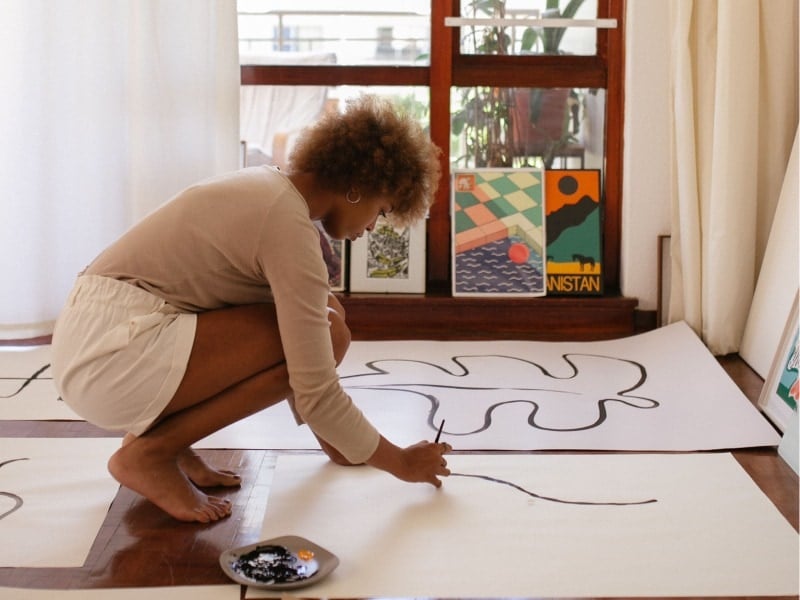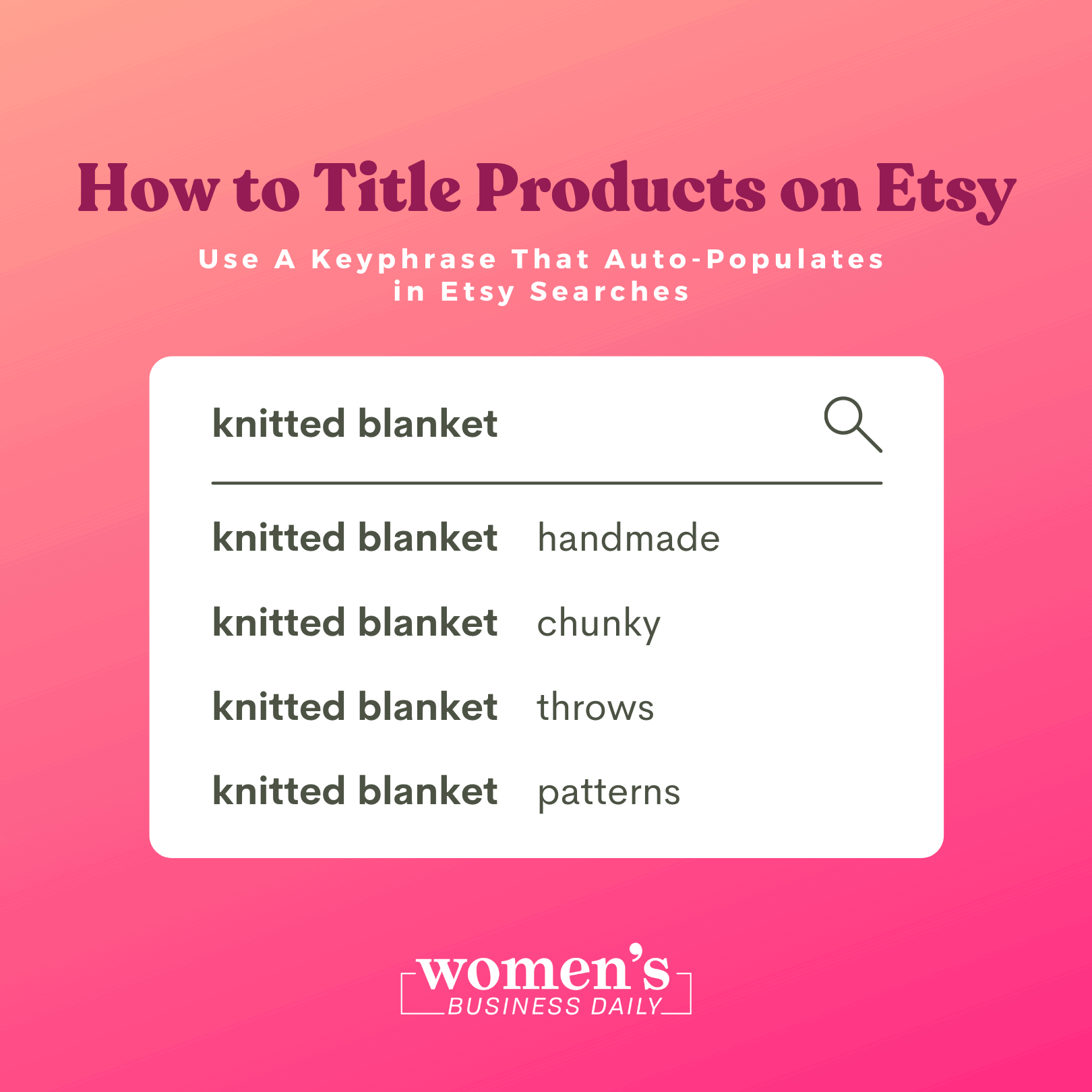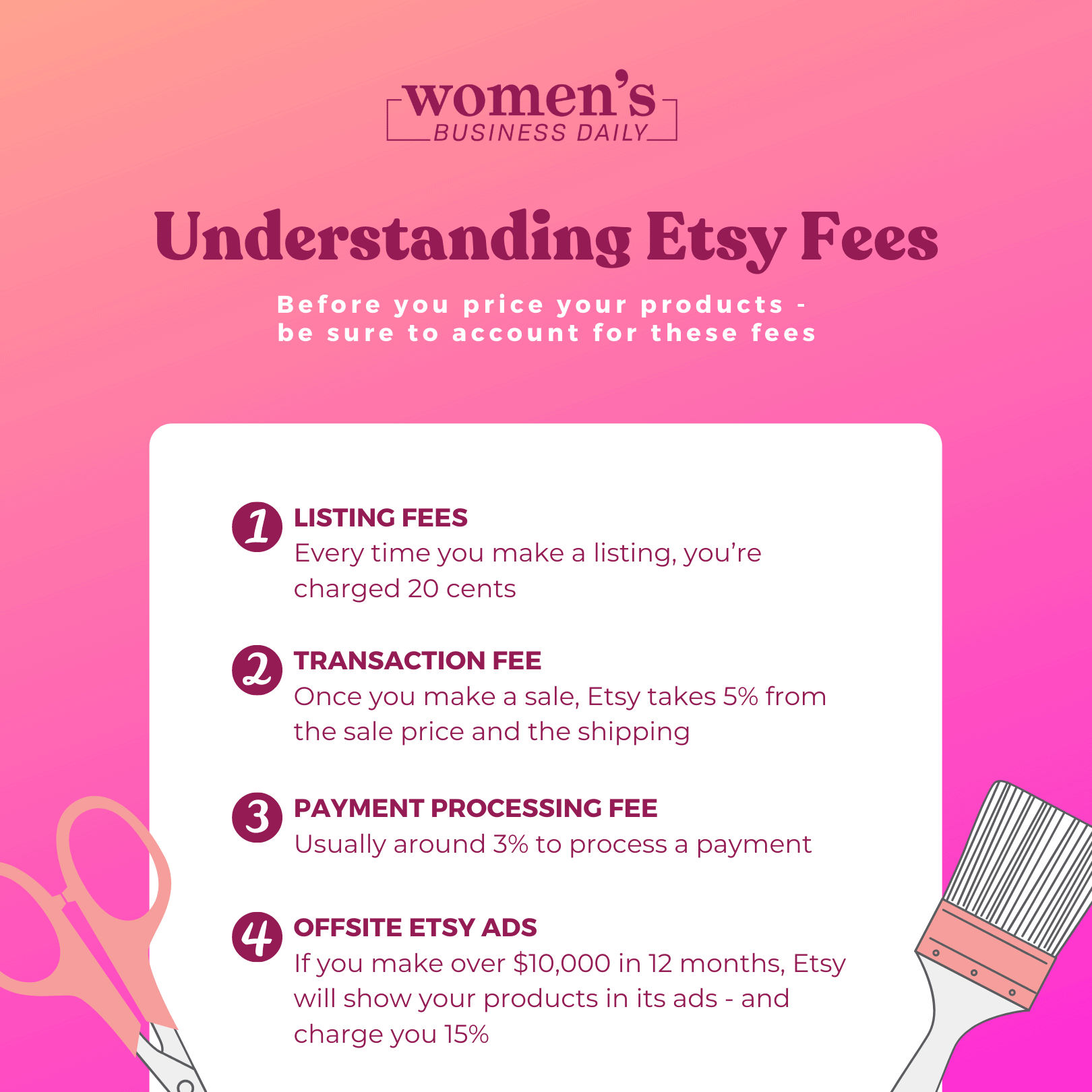Your Guide to How to Sell on Etsy

As soon as you realize you have a knack for a certain craft, this thought inevitably pops into your head; should I start an Etsy? But then the second thought creeps in; how do I figure out how to sell on Etsy?
Even if you’re not a traditional painter, crochet master, or vintage item collector, Etsy has expanded over the past few years to include people who offer Canva or Photoshop presets, psychics readings, chicken coop blueprints, and more!
What a lot of people don’t realize is just how much work goes into a successful Etsy shop. While setting up shop is simple enough, taking the perfect product photos, writing compelling listings, coming up with the right SEO tags, streamlining your shipping methods, and getting the word out about your shop on social media is a lot of work. It quickly becomes an obsession.
However, if you truly love what you do and love the challenge of running your own shop, you might just breakthrough and find success as a seller on Etsy. Here’s a guide with best practices on how to sell on Etsy successfully.
Getting Started
So you’ve decided to start your Etsy journey. It’s normal to feel both excited and nervous! Before you officially set up your Etsy account, you need to think about your business and crafting your brand.
If you’re a first-time business owner, this process can seem a little overwhelming, but we’ll break it down for you.
Branding
Before you can get started, you need a name that will catch people’s attention. Make it personal to you and your business, but give yourself space to grow. If you use your name, you might have difficulty in the future if you add employees and business partners. If you use something as specific as “crochet creations,” you limit yourself if you want to add watercolors in the future. Use language that captures the spirit of your brand without pigeon-holing yourself into one particular niche.
However, if you know for sure that all you ever want to do is macrame, feel free to use that in your title!
Once you’ve come up with some good ideas you like, you have to make sure that name is available on Etsy and any social media platforms you intend to use. Once you found something you like that is also available, grab it quick!
Next, you’ll want to figure out your brand colors and your logo. If you aren’t well-versed in graphic design, feel free to consult a professional to bring your vision to life; you can easily find someone who makes logos on Etsy. If you want to go the DIY route, try out a free site like Canva. It’s easy to use and has plenty of design elements to choose from. Your logo is something you can change in the future; changing your name is not as easy.
Before you open up, get your social media pages going. You want to build interest before your grand opening so when you’re ready to unveil your store, you already have interested consumers who are ready to buy. The one exception is TikTok; don’t start your TikTok until you have a functioning store. You never know when you could go viral, and you don’t want to waste that moment when it comes; you want a shop to direct them towards. Most other social media is predictable in its gradual growth.
Setting Up Shop
Once you’ve grabbed your name and started sharing pics of your work-in-progress pieces on your social media, it’s time to put together the barebones of your shop. You need to set up your:
- Description: Here you can give an explanation of your shop: why you started, what you offer, what your creation process is like. Give your customers something to love about your shop!
- About me: Here you get to talk about yourself as an artist and an individual. Make yourself interesting and likable; this is your chance to endear yourself to your customers so they look forward to supporting you.
- Finances: Link a card that can pay any fees you owe and a bank that can accept your Etsy payments. Do this early on in case there is some issue and Etsy needs to put your shop on hold while you address the problem.
- Shop policies: This part is extremely important. These include your cancellation, return, exchange, and shipping policies. These must be set up so that you can reference your customers to them if they want to cancel an order outside of your set window. This is the only way you can protect yourself and set up your customers’ expectations.
If you’re ever unsure about any of Etsy’s terms of services, directly consult the seller handbook.
Perfecting Your Listings
Alright, so you’ve got the structure of your shop taken care of. Don’t stress about it being perfect; you can always go back and make adjustments.
Getting listings right is where a lot of shop owners struggle; they’re incredible crafters, but not the best photographers and have difficulty finding the right words to describe their products. While each of these elements could easily be their own blog post, here are some tips and best practices at putting together eye-catching product listings.
Titles
When you’re writing titles, you’re writing for the Etsy search algorithm, not your customer. It’s a common misconception that really confuses a lot of first-time shop owners. Your description is where you write to the consumer; the title is where you use SEO auto-populating keywords to get your Etsy listings highly ranked in the search page.
It doesn’t matter how elegantly titled your listing is if no one ever sees it, and the Etsy algorithm is in charge of that determination.
So how do you title your listings? You use the keywords that pop up in the search bar.
Say you’re trying to sell a knitted blanket. The first keyword is going to be the one that says exactly what you’re selling. Go to the Etsy search bar and type in what you would type to find that blanket.
“Knitted Blanket Handmade” auto-populates in the bar. Use that as your first keyword.
You then can use keywords that describe the item. Think about what other words people would use to find your item. Maybe they aren’t looking for a knitted blanket, but they want a “comfy blanket” or a “brown throw blanket.” Look up those keywords and add them to your title until you’ve filled all 140 characters. Use commas between each set of keywords. Then, copy those keywords and paste them into your tags section. Find as many relevant tags as you can until you’ve used all thirteen tags.

Product Photos
Here’s a rule of thumb to follow when working on your photos and your description; take photos like there is no description and write a description like there are no photos. The truth of the matter is some people won’t look at the description before buying your item, so you need to show the object in use, in reference to something that gives the viewer an idea of its relative size, and from every angle. You can even use your graphic design skills to add some text to your photos for really important information, such as “sign does not come with hanger,” or “sticker is not waterproof.” Even if you have this information in the description, someone may not read it and then write a negative review if it does not live up to the expectations they made in their head about the product.
When taking photos, make sure you have a lot of light, whether that be from a natural or unnatural source. If you can’t take photos outside or you don’t have a lightbox, grab a lamp and set it over the product. Buying a smart bulb like the Wiz brand gives you the power to control the brightness, color, hue, and settings from your phone! They’re extremely affordable, considering they give you options akin to a professional lighting setup.
In addition to making sure your photos are bright, make sure they are in focus, and if you edit them, make sure they stay true to the color of the product. Show it from different angles, in use, against a plain background, and in a lifestyle setting.
Description
As we said before, make sure you write a description that is so detailed that someone could purchase the product without ever seeing it.
Not only will this help you write a better description, but some of your clients might live with visual impairments and can’t see your photos. They deserve just as clear an idea of what to expect from your product as those who can see.
When you’re writing your description, be sure to include:
- Appearance: Before anything else, describe what the product looks like!
- Uses: Describe how the product can and should be used.
- Dimensions: It’s important that your readers know exactly how big or small the item will be.
- Quantity: Make sure you explain how many of your items your client will receive.
- Variations: If there are multiple options that your clients can choose from, describe them all in detail and explain how many or few they can pick.
- Disclaimers: Here is where you can cover yourself if a customer messages you angrily. Make sure you explain how not to use the product and what they can’t expect from the product. If you have a sticker that isn’t waterproof, mention it here and explain how they can’t put it through the dishwasher on a water bottle.
- Care Instructions: Explain how the buyer can care for the item so it lasts. If it’s clothing, explain the washing instructions, if it’s a print, explain that it should be framed and kept out of direct sunlight so it doesn’t fade.
Managing Sales and Fees
So now that you’ve got the perfect listings that people will want to buy, it’s time to take a look at the logistics.
When pricing to start selling items, it’s extremely important to understand the listing fees, payment processing fees, and transaction fees. If you don’t, the amount in your Etsy payment account is really going to surprise you.
- Listing fees: Before you even sell anything, every time you make a listing, you’re charged 20 cents. You can set it up so that every time you make a sale, the listing will auto-renew for another 20 cents so it is still available in your shop.
- Transaction fee: Once you make a sale, Etsy takes 5% from the sale price and the shipping. If you offer free shipping, you don’t need to worry about the shipping fee. It’s set up this way so someone can’t make their item $1 and charge $14 for shipping to avoid the transaction fee.
- Payment processing fees: These fees vary depending on the location of the bank the credit card is attached to. This fee hovers around 3%.
- Offsite Etsy ads: If you made less than $10,000 on Etsy in the last 12 months, you can opt-out of this program. Etsy advertises your product on other sites, and if someone clicks on the link to your product and makes a purchase within 30 days, you are charged a 15% fee. That’s why it’s extremely important to factor in future sales you run into your overhead pricing. Even when you run a sale, you still want to make a profit.
When determining the price of the item for your sales on Etsy, account for the price of your materials, the cost of shipping, and an hourly wage you’d like to pay yourself.

Learning How to Sell on Etsy is a Process
No matter how much research you do, you will not start with a perfect shop. Honestly, there’s no such thing as a perfect shop. What works for one shop won’t work for another. You need to go through a lot of trial and error before you find what works for you.
It’s a frustrating but extremely rewarding process if you stick with it.
An unofficial piece of advice? When you’re looking to purchase gifts or something for yourself, shop on Etsy. Not only will you get a sense of what photos grab you, how the checkout process works, and what makes you click “buy now,” but you know how it feels when you get that notification that you made a sale. Spread that joy with another small business owner!
Author, Artist, Photographer.
Sarah Margaret is an artist who expresses her love for feminism, equality, and justice through a variety of mediums: photography, filmmaking, poetry, illustration, song, acting, and of course, writing.
She owns Still Poetry Photography, a company that showcases her passion for capturing poetic moments in time. Instead of poetry in motion, she captures visual poetry in fractions of a second, making cherished keepsakes of unforgettable moments.
She is the artist behind the Still Poetry Etsy shop, which houses her illustrations and bespoke, handmade items. She is the author of intricacies are just cracks in the wall, a narrative poetry anthology that follows a young woman discovering herself as she emerges from an abusive relationship.






Responses